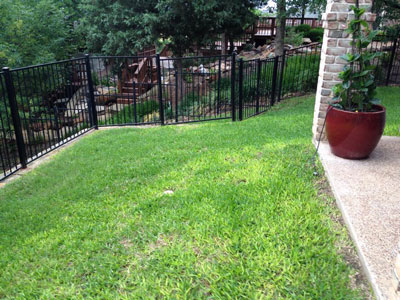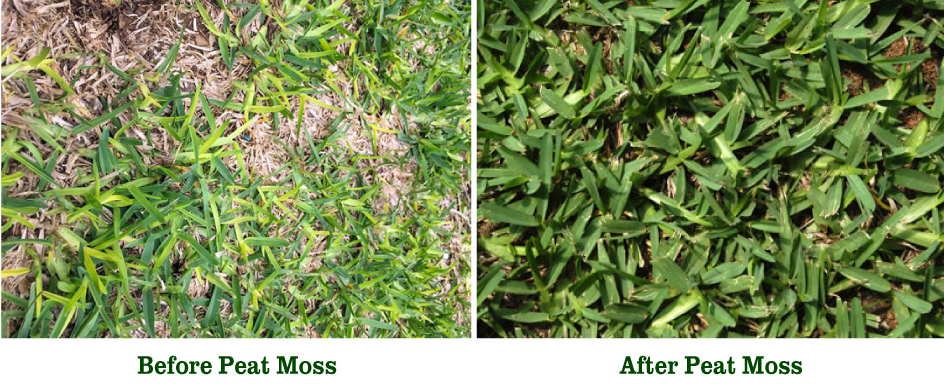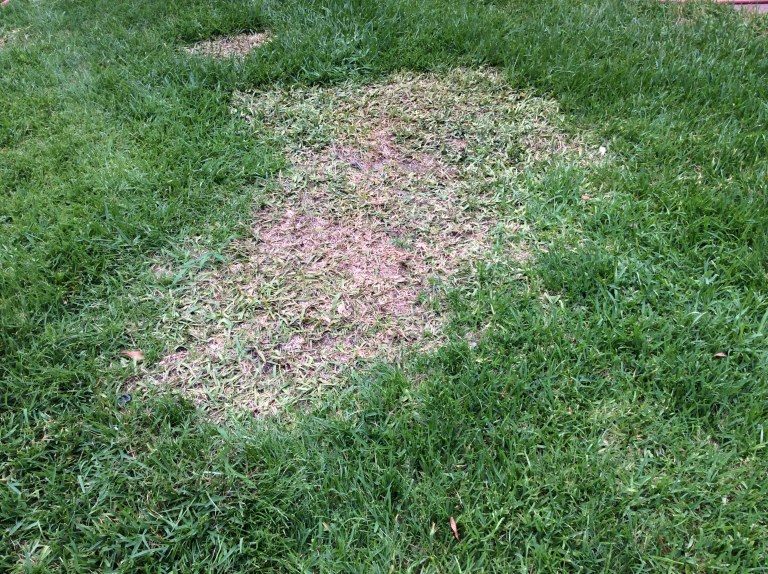

Brown patch/Large patch fungus and Take-all Root Rot (TARR) are two unwelcome Fall and Winter visitors to our South Texas lawns. Cool nighttime temperatures and moisture on the grass from rain, dew, or excessive watering frequency are the two main factors promoting these diseases. Large patch is relatively easy to diagnose visually if you are familiar with the symptoms. TARR has more subtle and varying symptoms and requires 60x or greater magnification to positively ID. Large patch is an unsightly annoyance for Fall and Winter, but damaged grass will regrow in Spring. TARR does not show much damage while the disease is spreading over Winter, but when hot temperatures arrive in Summer, the weakened roots and runners are unable to support the water requirements of the infected areas, and they decline or die.
There is no “curing” or eliminating these diseases, but you can attempt to prevent them, or manage them, by various means. Culturally, you should “goldilocks” your lawn: not too much water, not too little, but just right. Water deeply when needed to avoid drought stress but keep the frequency of application to a minimum. Mow as often as needed. Do not let grass grow too tall, but do not cut it too short. Fertilize according to recommended timing and quantity, not too much or too little. If you see a fungus damaged area, mow it last to minimize spreading into healthy areas. Keep mower blades sharp, so grass is cleanly sliced rather than ripped with slower-healing ragged edges. Any stresses make the lawn more vulnerable to infection by a harmful fungus.

We have fungicides that can help prevent or suppress harmful fungus, but keep in mind that there are also beneficial fungal organisms that recycle dead organic matter into plant nutrients and help prevent thatch. So excessive fungicide use, like most excesses, can cause new problems. My personal recommendation is to let large patch fungus run its course, as it does no permanent damage, just temporary unsightliness. But I recommend topdressing TARR infected lawns with peat moss, to control (can’t eliminate) the disease, as the damage is permanent. Best is for you to bring in some samples (still alive but with symptoms) and photos for us to look at, and offer to you various courses of action, for you to choose whatever approach you are most comfortable with.

-James



Reader Interactions